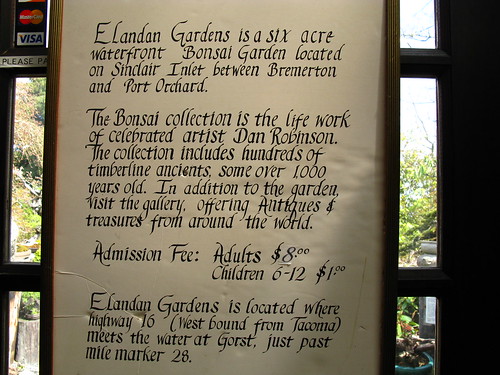
Last Friday, my friend Julie took me to visit Elandan Gardens, a former dump-site on the waterfront across the Puget Sound west of Seattle. Elandan has a most incredible collection of bonsai and dwarfed plants.
I am not a bonsai aficionado, but I feel inspired to become one after visiting Elandan. Hundreds of specimens line a path along the edge of a small promontory, further adorned with large pieces of driftwood, interesting rocks, upturned old tree roots, and, of course, waterfront views. The garden is one part of a family-owned and operated home-and-garden design company. Just visiting the design store accompanying the garden is with worth the price of a ferry ride to Bremerton, imo.
But we came to see the gardens, of course.
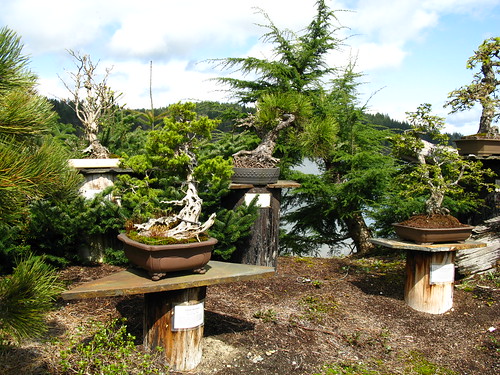
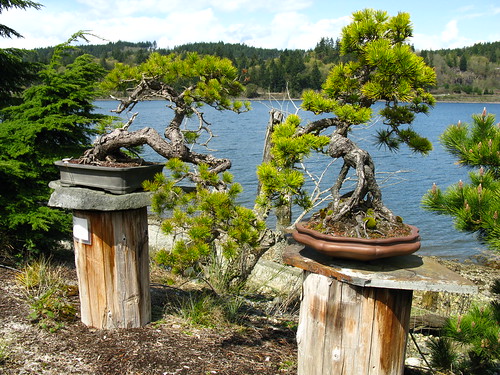
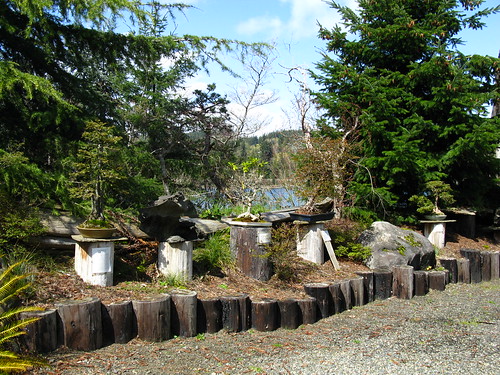
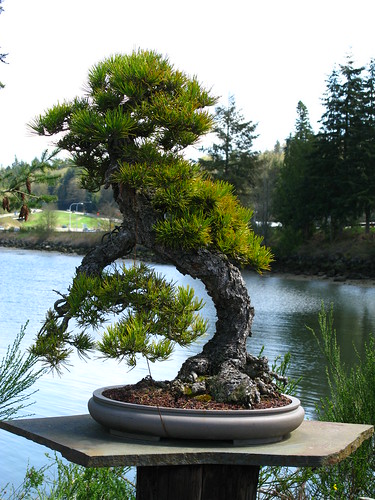
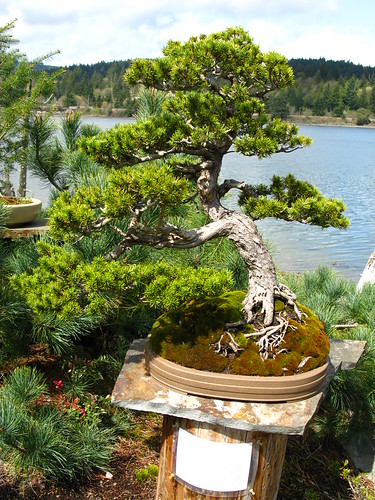
Coast redwood (Sequoia sempervirens):
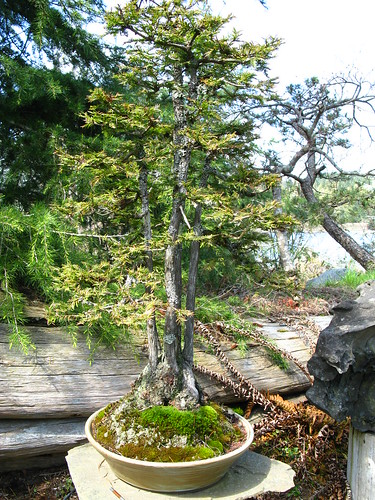
Atlas Cedar (Cedrus atlantica):
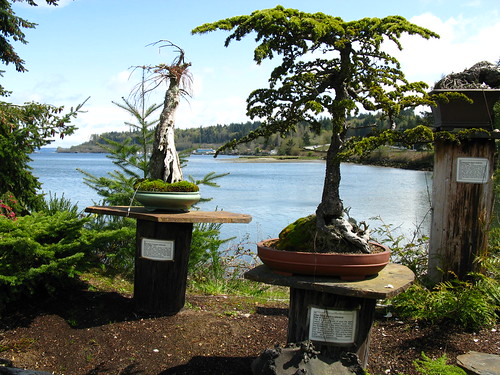
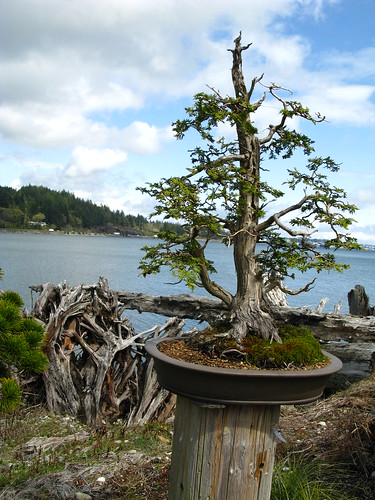
This was one of my favorite specimens, a climbing hydrangea (Hydrangea petiolaris) trained into a loop. I'm afraid it didn't photograph especially well.
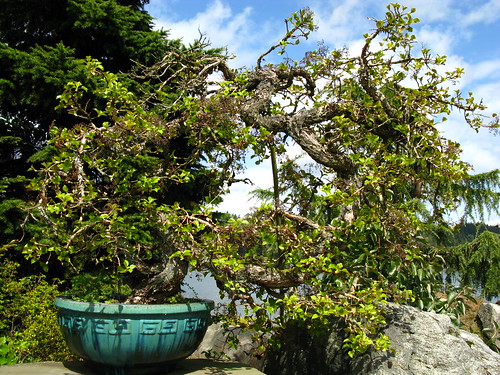
Curatorial information dated the plant to 1895.
“This splendid lace cap was salvaged from an old residence that was scheduled to be demolished. Peeling its clinging branches off the old wooden wall was tricky. Eminently reducible in size, I decided to leave it big and beautiful. The wood is not very strong, when the wind blows, the tree wobbles a bit freely.”It was just leafing out, and about to flower.
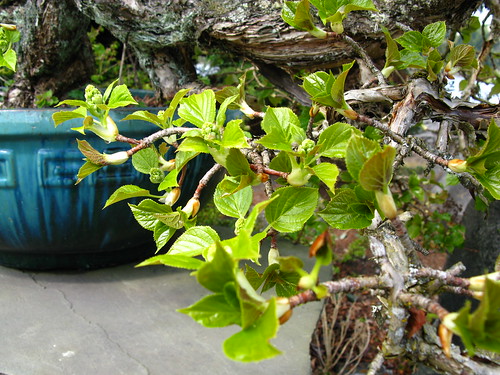
Many other specimens were collected as dwarfs found in the wild, and converted to bonsai. Elandan founder Dan Robinson dated his Rocky Mountain Juniper (Juniperus scopularum) collected in Montana to 1250 A.D.
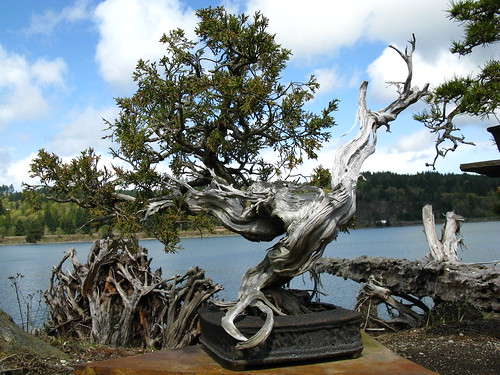
"Discovered near Drummond on a quick reconnoiter up a hill in 1989. Carrying just a crowbar and pruners, I had to sacrifice my shirt to tie up the roots of this beauty after extraction. It was growing in crumbling basalt, so it came out bare root. Its incredible trunk line and profound age make it a favorite."(I'll just assume all the wild collecting was done on the up and up.)
This shore pine (Pinus contorta contorta), dated to 1500 AD, is a work in progress.
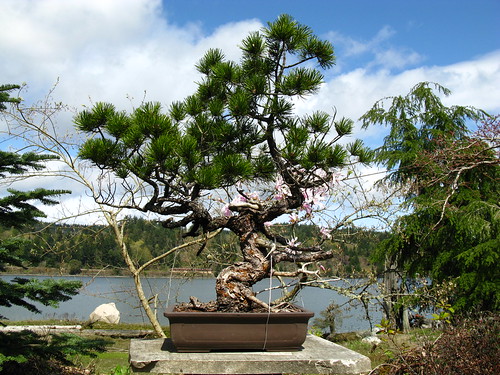
"This splendid old pine was collected from a boggy site in the northern end of Vancouver Island in 2003. Nearly eight inches of accreted overburden buried its basal character. Healthy and ready for training, its left-hand branch will be lowered about six inches thereby eliminating its two top look.”Many other plants, like this crinkly leaf maple (Acer palmatum crispum) were given or sold to Elandan by other bonsai enthusiasts, or acquired through trade.
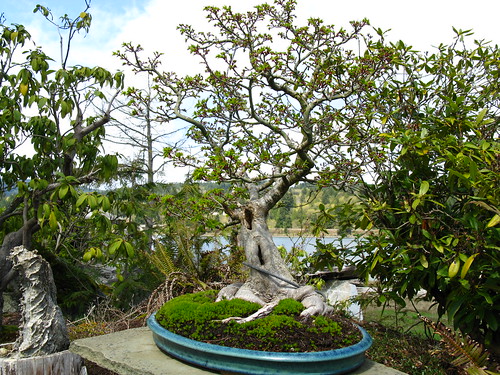
"Gifted to Elandan Gardens in 1990, this treasure of a tree had never received Bonsai training. Mary Davis had given it the ball-type pruning just to keep it small. Its conversion to bonsai involved the removal of several large limbs, the scars of which are still evident. The hole in the trunk was an extra incision designed to interrupt the flawless lower trunk with a bit of aging.”

The curatorial notes throughout the garden provided some fascinating plant-biographical information. This Japanese Larch (Laryx laptoleptis) entered the world in 1973.
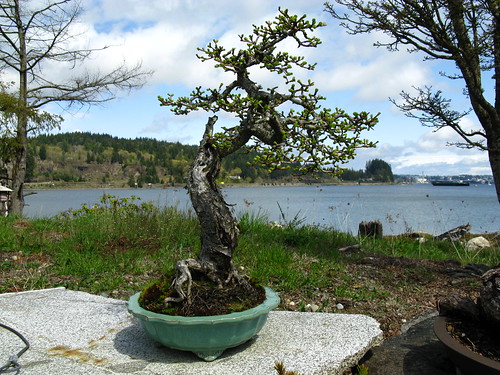
"John Hinds gifted this fine larch to Elandan Gardens. Mr. Hinds acquired about a hundred seedlings from Mussers Nursery in 1974. He trained them for about twenty years and donated a number of them to Elandan in 1994. This fine tree had a large top that I removed by air-layering, giving me two trees. I carved the stub and trained the big remaining branch into the form seen here. Air layering was done in 1997. Carving and wire training was started in 1999."I appreciated the thoughtful placement of container specimens near similar plants in the ground.

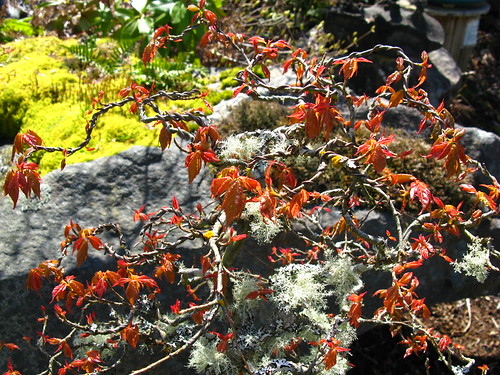
A murky pond in the center of the garden added to the mood...
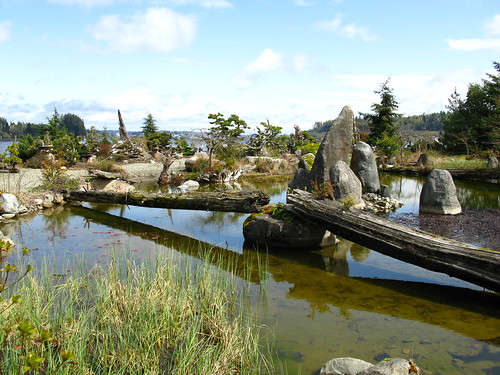
And served as an appropriate backdrop for many species, like this pond cypress (Taxodium ascendens) from Florida.
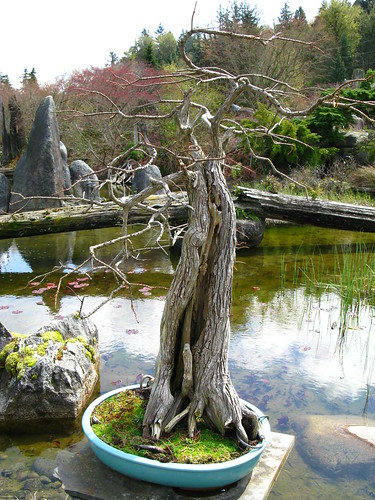
"Year of Origin: 1500. Collected in Florida, this wizened denizen of a tropical swamp has survived all the adversity that southern Florida has to offer. Growing in a swamp is less than ideal. The absence of oxygen, alkaline soil conditions, high-intensity heat, and proliferation of insects all lead to miniaturized growth. My experience indicates that the water immersion is the major dwarfing influence. Pond Cypress is an adaptable tree, surviving in a variety of cold weather climates. Collected in 1998."Every kind of moss seemed to be growing on the garden grounds.
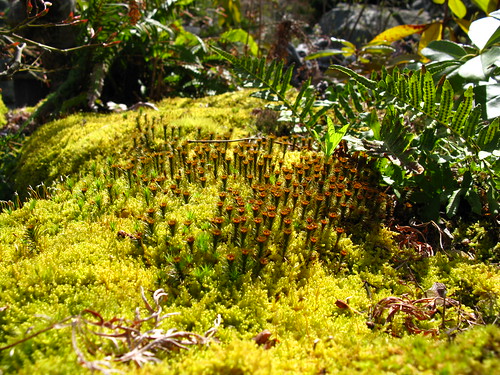
And a lot of it turned up in the bonsai specimens too.
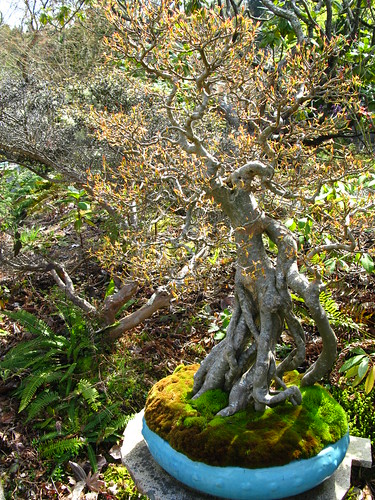
It's hard not to have moss in rainy Washington state. For specimens left out in California, I suppose rocks or Sempervivum would make more sense.
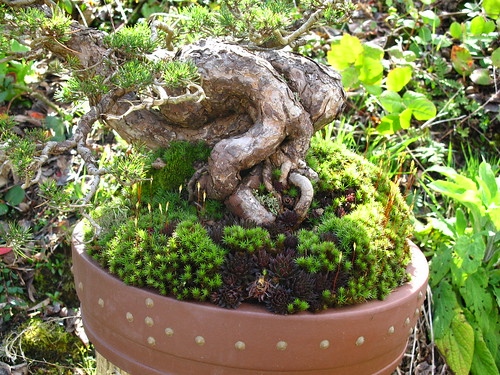

I took this movie to show you the raindrops held like jewels in the fascicles of this larch.
Julie took some great close-ups during our visit. Additionally, she blogged about her own visit here two years ago.
